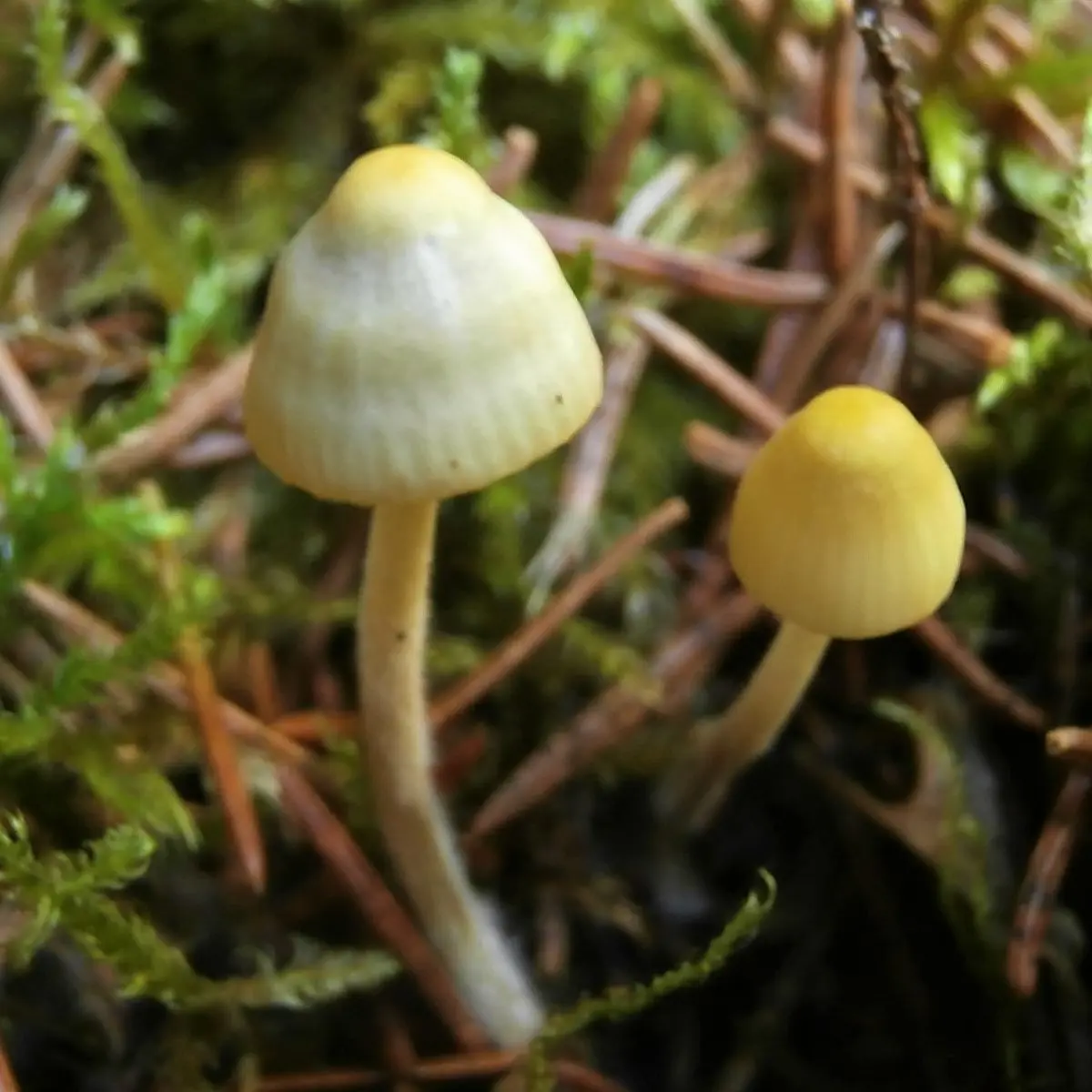Mycena yellow-edged (Mycena citrinomarginata)
- Division: Basidiomycota (Basidiomycetes)
- Subdivision: Agaricomycotina (Agaricomycetes)
- Class: Agaricomycetes (Agaricomycetes)
- Subclass: Agaricomycetidae (Agaricomycetes)
- Order: Agaricales (Agaric or Lamellar)
- Family: Mycenaceae (Mycenaceae)
- Genus: Mycena
- Type: Mycena citrinomarginata (yellow-bordered Mycena)
:
- Mycena avenacea var. citrinomarginata

head: 5-20 millimeters across and about 10 mm in weight. Conical when young, then broadly conical, parabolic or convex. Furrowed, radially striated, dull translucent, hygrophanous, glabrous, smooth. Very multicolored: pale yellowish, greenish yellow, olive yellow, pure yellow, yellowish brownish gray, grayish green, gray yellowish, darker in the center, paler towards the edge.
plates: weakly grown, (15-21 pieces, only those that reach the stem are considered), with plates. Dull white, becoming pale grey-brown with age, with lemon to dark yellow edging, rarely pale to whitish.
Leg: thin and long, 25-85 millimeters high and 0,5-1,5 mm thick. Hollow, brittle, relatively even along the entire length, somewhat widened at the base, round in cross section, straight to slightly curved. Finely pubescent around the entire perimeter. Pale, pale yellowish, greenish yellow, olive green, greyish, lighter near the cap and darker below, yellow-brown to greyish-brown or inky brown. The base is usually densely covered with long, rough, curving whitish fibrils, often rising quite high.

Pulp: very thin, whitish, translucent.
Smell: weak, pleasant. Some sources (California Fungi) indicate a distinct “rare” smell and taste.
Taste: soft.
Spore powderk: white or with a lemon tint.
Споры: 8-12(-14.5) x 4.5-6(-6.5) µm, elongated, almost cylindrical, smooth, amyloid.
Unknown. The mushroom has no nutritional value.
It grows in large clusters or scattered, habitats are different: on lawns and open areas under trees (both coniferous and deciduous of various species), among leaf litter and twigs under common juniper (Juniperus communis), among ground mosses, on moss tussocks, among fallen leaves and on fallen twigs; not only in forests, but also in urban grassy areas, such as lawns, parks, cemeteries; in grass in mountainous areas.
From mid-summer to autumn, sometimes until late autumn.
The yellow-banded mycena is a very “diverse” species, the variability is enormous, it is a kind of chameleon, with a color range from yellow to brown and a habitat from grass to forest. Therefore, determination by macrocharacteristics can be difficult if these macrocharacteristics intersect with other species.
However, it is believed that the yellow shades of the cap and stem are a fairly good “calling card”, especially if you add the edge of the plates, usually distinctly colored in lemon or yellowish tones. Another characteristic feature is the stem, which is often covered with woolly fibrils far up from the base.
Some sources list Mycena olivaceomarginata as a similar species, to the point of debating whether they are the same species.
Mycena yellowish-white (Mycena flavoalba) is lighter.
Mycena epipterygia, with a yellowish-yellow-olive cap, can be visually identified by the dry skin of the cap.
Sometimes M. citrinomarginata can be found under juniper along with the very similar Mycena citrinovirens, in which case only microscopy will help.
The brown form of M. citrinomarginata bears a resemblance to several forest mycenae, perhaps the most similar being the milkweed (Mycena galopus), which is easily distinguished by the milky juice secreted on the lesions (for which it was called “milky”).
Photo: Andrey, Sergey.









